sustainable fashion
description: part of design philosophy and trend of sustainability in fashion
62 results
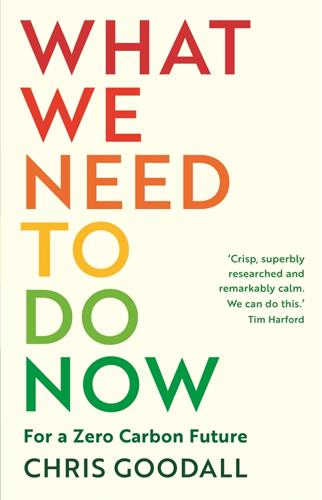
What We Need to Do Now: A Green Deal to Ensure a Habitable Earth
by
Chris Goodall
Published 30 Jan 2020
ISBN 9781788164719 e-ISBN 9781782836667 Contents INTRODUCTION: A NEW DEAL FOR CLIMATE We need to create a zero carbon world by 2050 — or earlier CHAPTER 1: GREEN ENERGY Powering (almost) everything with wind, sun ... and hydrogen CHAPTER 2: LOCAL GRIDS Taking back local control of our energy generation and distribution CHAPTER 3: HOUSES FIT FOR PURPOSE We need effective insulation of homes and to convert gas boilers to run on hydrogen CHAPTER 4: ELECTRIC TRANSPORT A fast track to electrification, car-sharing and free public transport CHAPTER 5: FLIGHTS AND SHIPPING We need to fly less — the hardest challenge for zero carbon. And shipping should run on hydrogen CHAPTER 6: SUSTAINABLE FASHION Without big changes, clothing alone will stop us achieving net zero CHAPTER 7: CONCRETE PROBLEMS Using less cement and other resources – and replacing fossil fuels in heavy industry CHAPTER 8: PLANT FOOD REVOLUTION The global climate costs of meat are not sustainable CHAPTER 9: REFORESTING BRITAIN Using forests and woodland to suck CO2 from the air CHAPTER 10: CARBON TAXATION The economist’s answer to the climate crisis CHAPTER 11: DIRECT AIR CAPTURE OF CO2 A vital technology for reducing carbon dioxide levels CHAPTER 12: SHOULD WE GEOENGINEER?
…
One senior executive at a Japanese business specialising in power transmission for ships recently asserted that ‘hydrogen’s uptake in maritime will take a lot of people by surprise, with developments moving ahead quickly – in both Europe and Asia, particularly China. There are obvious challenges, in terms of production, bunkering and other infrastructure, but demand will work as a powerful driver to help industry overcome these issues.’ CHAPTER 6 SUSTAINABLE FASHION Without big changes, clothing alone will stop us achieving net zero Fashion represents about 3–4 per cent of the UK’s carbon footprint, though it is not always accounted for in national estimates. Most of the emissions of greenhouse gases take place in the countries where raw materials are made or the clothing manufactured.
…
Businesses like this will be central to the development of the ‘circular economy’, as well as producing good-quality skilled employment for local people. ‘Fixing something we might otherwise throw away is almost inconceivable to many in the heyday of fast fashion and rapidly advancing technology,’ says Rose Marcario, the CEO of Patagonia, one of the most sustainable fashion companies in the world. ‘But the impact is enormous. As individual consumers, the single best thing we can do for the planet is keep our stuff in use longer.’ A more profound change might come from making different assumptions about clothing. Rather than using bright new garments as our way of showing off, or feeling good about ourselves, we should look to buy clothes that might instead show off our conscience and reliability.
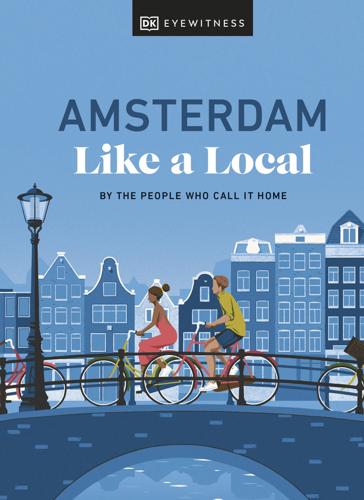
Amsterdam Like a Local
by
Dk Eyewitness
Quality Chicago Bulls jerseys, Cooper flight jackets and cosy knits fill the two narrow floors of one of Amsterdam’s oldest vintage stores, and there’s even a rack dedicated to a true Dutch necessity: waterproof raincoats. Zipper also recycles clothing to create new garments under the house label Ultra Zipper. Learn more about sustainable fashion at the Fashion for Good museum, a five-minute walk away. g Vintage Stores g Contents Google Map BIS! Map 1; Sint Antoniesbreestraat 25A, Nieuwmarkt; ///quiz.notebook.motivate; www.bis-vintage.nl Grandma’s attic meets grandad’s military trunk at Bis!, which has earned true celeb status among Amsterdammers.
…
Pop into DROOMFABRIEK DE GROOT & DE JONG Nieuwe Spiegelstraat 9B, Spiegelkwartier; www.droomfabriekantiek.nl ///drop.enable.journals It’s all about vintage costume jewellery at this airy emporium – perfect for finding a gift for someone special (or yourself). 2. Rummage the rails at EPISODE Nieuwe Spiegelstraat 37H, Spiegelkwartier; www.episode.eu ///conveys.turkeys.hosts Sift through the colossal selection of vintage clothes in this Dutch sustainable fashion chainstore. 3. Peruse the antiques at KRAMER KUNST & ANTIEK Prinsengracht 807, Spiegelkwartier; www.antique-tileshop.nl ///money.beefed.ticket Admire the biggest collection of Dutch tiles, timeless crystal and Asian porcelain at this family-run antiques shop. 4. Dig through the crates at RECORD PALACE WETERINGSCHANS Weteringschans 33A, Spiegelkwartier; www.recordstoreday.nl ///minus.finishes.robots This gem of a vinyl store is one of the city’s longest-running.
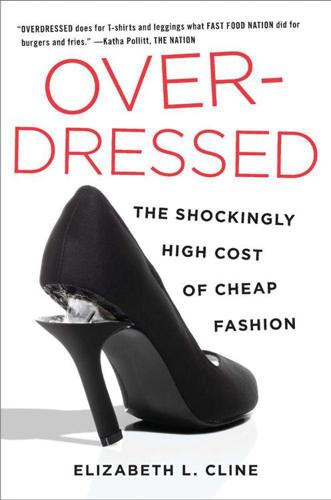
Overdressed: The Shockingly High Cost of Cheap Fashion
by
Elizabeth L. Cline
Published 13 Jun 2012
She says her clothes have a message and a lifestyle ingrained in them: “Knowing how to style yourself and to be creative with your clothes trumps having a lot of them.” Versatile clothing like this is becoming a more mainstream idea in fashion, with such retailers as American Apparel selling loose fabric along with styling pamphlets. Starbuck’s line was featured at the 2010 Green Shows, a runway show dedicated to sustainable fashion that is held in Manhattan at the same time as fall Fashion Week. By spring, Starbuck had four of her pieces from the Green shows—the halter top in two colors, the pants, a coat-dress, and a cream wrap dress—in three Manhattan locations of Urban Outfitters. She and I met up at the East Village location so I could test-drive her line, which we found hidden in a rack of tank tops in loud colors and the year’s ubiquitous tiny floral prints.
…
A Snack? Or Something to Wear? The H&M $4.95 Dress,” Vogue Daily, vogue.com, last modified August 19, 2010, www.google.com/intl/en/privacypolicy.html. 17. Eva Wiseman, “The Gospel According to Forever 21,” The Observer, July 16, 2011. 18. Leah Bourne, “H&M’s Head of Design Ann-Sofie Johansson on Sustainable Fashion and Managing a Team of 140,” Thread New York, www.nbcnewyork.com/blogs/threadny. 19. “Buckle Up, Fast Fashion Is Here,” Sydney Morning Herald, April 16, 2011. 20. Craig Lambert, “Real Fashion Police: Copyrighting Clothing,” Harvard Magazine, July–August 2010. 21. La Ferla, “Faster Fashion, Cheaper Chic.” 22.
…
Chapter 5: The Afterlife of Cheap Clothes 1. “Jeaneology: ShopSmart Poll Finds Women Own 7 Pairs of Jeans, Only Wear 4,” PR Newswire, www.prnewswire.com/news-releases/jeaneology-shopsmart-poll-finds-women-own-7-pairs-of-jeans-only-wear-4-98274009.html. 2. “A Closet Obsession,” Time, October 24, 2005. 3. Jana Hawley, “Sustainable Fashion: Why now? A Conversation Exploring Issues, Practices, and Possibilities,” Economic Impact of Textile and Clothing Recycling (New York: Fairchild Books, 2008): 207–32. 4. “Avtex Fibers, Inc.,” Mid-Atlanta Superfund, U.S. Environmental Protection Agency, www.epa.gov/reg3hwmd/npl/VAD070358684.htm. 5.

Dublin Like a Local
by
Dk Eyewitness
Locals spread out on blankets and enjoy classic films with a bite to eat (courtesy of tempting food trucks) in popular Merrion Square. FLEA MARKETS GALORE Antique lovers and fashionistas hit the flea markets that begin to pop up at the start of June, from the Dublin Flea on Thomas Street to the sustainable fashion fairs in The Well. AUTUMN FIRESIDE PINTS When the nights draw in and the rain pours, the pubs light their turf fires and locals cosy up by the hearth with a pint. CULTURAL TOURS September sees Dubliners head indoors for a dose of culture. Theatre lovers head to both big venues and tiny pop-ups to see new plays courtesy of Dublin Theatre Festival and Fringe, while the curious are drawn to Culture Night for free gigs and literary events.
…
Casual, minimal lifestyle attire keeps locals returning to stock up as the seasons change, while the brand’s own graphic tees, hats and hoodies attract those seeking more abstract items. Everything is supplied by eco brands from around Europe, so you’re allowed to feel smug as you stroll down the high street in your sustainable shirt. Try it! UPCYCLE YOUR GARMS Sustainable fashion advocates @theuselessproject run upcycling workshops, where you can learn how to make minor fixes or give old pieces a new lease of life. g Indie Boutiques g Contents Google Map BOW & PEARL Map 5; Unit 33, Swan Centre, Rathmines; ///tone.admire.edge; www.bowandpearl.com Where does a Rathmines lady outfit her wardrobe?

The Raging 2020s: Companies, Countries, People - and the Fight for Our Future
by
Alec Ross
Published 13 Sep 2021
Pollution from China’s Textile Industry,” Natural Resources Defense Council, April 11, 2012, https://www.nrdc.org/experts/susan-egan-keane/how-clean-are-your-clothes-pollution-chinas-textile-industry. Their slogan, “Made in Earth”: “Sustainable Fashion Inspired by Millennia of Chinese Cultural History,” Euro News, March 1, 2020, https://www.euronews.com/living/2020/03/01/sustainable-fashion-inspired-by-millenia-of-chinese-cultural-history. Icicle, along with its suppliers: “Suppliers,” Icicle, accessed June 2020, https://www.icicle.com.cn/en/suppliers/. That changed in 2019: Anaïs Lerévérend, “Icicle to Open in Paris Its First Flagship Outside China,” Fashion Network, April 19, 2019, https://ww.fashionnetwork.com/news/Icicle-to-open-in-paris-its-first-flagship-outside-china,1091104.html.
…
Since then, Icicle has recruited European fashion executives to help introduce it to a wider audience and create a new “Made in China” ethos that wears sustainability on its sleeve. A new wave of the fashion industry, focusing on eco-friendly clothing, has caught up with Icicle and Patagonia in recent years. According to a January 2020 report by Barclays bank, sustainable fashion has the potential to grow into a €100 billion industry. A 2017 study on consumer trends in China found that 58 percent of consumers were willing to pay more for responsibly made clothing. Companies like Patagonia and Icicle increasingly have loyal customers who are interested not just in the products but also in the mission.
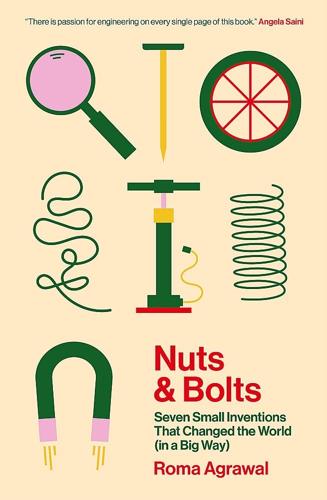
Nuts and Bolts: Seven Small Inventions That Changed the World (In a Big Way)
by
Roma Agrawal
Published 2 Mar 2023
‘Gold and Silver Nanocomposite-Based Biostable and Biocompatible Electronic Textile for Wearable Electromyographic Biosensors’. APL Materials, vol. 9, no. 9, 1 September 2021. https://doi.org/10.1063/5.0058617. Macalloy. ‘McCalls Special Products Ltd – Historical Background’. [Company Brochure], 7 August 2002. Mansour, Katerina. ‘Sustainable Fashion Finds Success in New Materials’. Early Metrics, 15 April 2021. https://earlymetrics.com/sustainable-fashion-finds-success-new-materials/. Marcal, Katrine. Mother of Invention: How Good Ideas Get Ignored in an Economy Built for Men. William Collins, 2021. McCullough, David. The Great Bridge: The Epic Story of the Building of the Brooklyn Bridge.
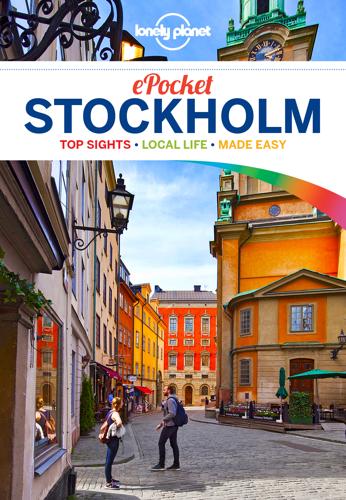
Pocket Stockholm Travel Guide
by
Lonely Planet
CHRISTIAN VIERIG/GETTY IMAGES © Sustainability Perhaps unsurprisingly in a country as green as Sweden, sustainability is a big issue in fashion (historically, the industry has had its failings). Several Swedish brands place an emphasis on keeping their manufacturing processes eco-friendly and ethical. Check out the Sustainable Fashion Academy (www.sustainablefashionacademy.org) for more. yTop Tips AStockholm Street Style (www.stockholm-streetstyle.com) Street fashion blog. AStockholm Fashion Week (www.stockholmfashionweek.com) Sets the catwalks abuzz every autumn. Best Contemporary Fashion Acne Skinny jeans and impeccable cool, now world-famous and highly sought-after.

Making It in America: The Almost Impossible Quest to Manufacture in the U.S.A. (And How It Got That Way)
by
Rachel Slade
Published 9 Jan 2024
The Guardian, https://labs.theguardian.com/unicef-child-labour/. Chomsky, Noam. Profit over People: Neoliberalism and Global Order. New York: Seven Stories Press, 1999. Chua, Jasmin Malik. “Why California Could Be the Sustainable Fashion Capital of the US.” Sourcing Journal, July 27, 2020, https://sourcingjournal.com/denim/denim-innovations/california-eco-friendly-fashion-capital-boyish-jeans-sustainable-fashion-alliance-222041/. Clean Clothes Campaign. Un(der) Paid in the Pandemic: An Estimate of What the Garment Industry Owes Its Workers. 2020, www.cleanclothes.org. Cline, Elizabeth L. Overdressed: The Shockingly High Cost of Cheap Fashion.
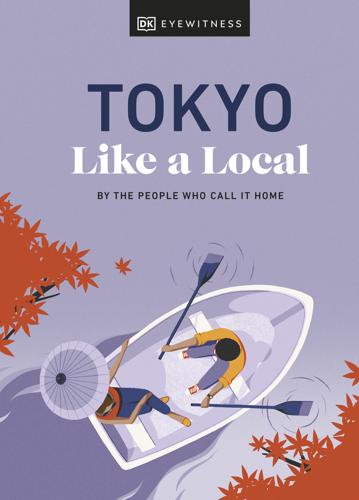
Tokyo Like a Local
by
Dk Eyewitness
While the fashion-conscious sift the racks of hot international labels on the first floor, style mavens check out the accessories from coveted Japanese designers on the second. » Don’t leave without heading up to the third floor, dedicated to high-end designer handbags from labels like Gucci and Chanel. g Street Style g Contents Google Map SAMVA Map 4; 2-5 Daikanyamacho, Shibuya; ///puff.sports.samples; www.samva.hiphop This boutique is home to the beloved Japanese label Yeah Right!!, which is leading the way in the city’s sustainable fashion movement. It’s attracted a cult-like following for upcycled pieces, made by reworking preloved clothing and homewares in innovative ways. Everything from used scarves to rugs becomes cushions and T-shirts, so you’re allowed to feel smug as you redecorate your home and wardrobe sustainably. g Street Style g Contents Google Map HAYATOCHIRI Map 6; 3-4-11 Kitakoenji, Suginami; ///frames.saucepan.diner; www.hayatochiri.thebase.in You know you’re in for something special when the owner of a store is quoted for wanting to create “the most interesting place in the world!”
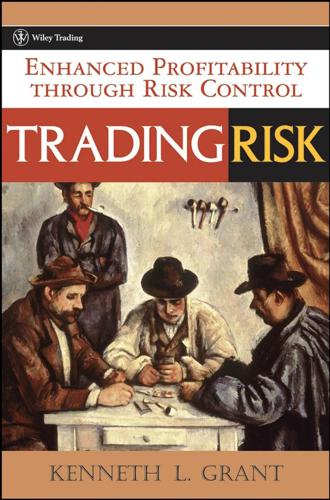
Trading Risk: Enhanced Profitability Through Risk Control
by
Kenneth L. Grant
Published 1 Sep 2004
The return of some $3.5 billion of investor capital was not, as subsequent events proved, driven by a desire to operate at lower levels of investment in the face of reduced opportunity set, but was simply a part of a plan on their part to increase the leverage of their proprietary investment program! While I obviously cannot speak with accuracy about their mindset, this appears to be the only logical explanation, because as we learned in the unwind, they were scaling up their position sizes in a sustained fashion, both at the time of their capital reduction and for months after the fact. What was worse, several of the partners in the firm had actually borrowed very aggressively in order to maximize their investments in the partnership. The end result of these confluences was that individuals who were considered among the brightest lights in the whole investment industry had borrowed money to invest in a fund product that was itself trading in a highly levered fashion, financed through credit arrangements with banks and broker dealers.
…
APPLY LIBERAL DOSES OF HUMILITY AND HUMOR The beautiful thing about the markets is the fact that they represent the combined input of all economic agents who act, at least in theory, to protect their own interests, based on a universally available information set, which they are able to process in a rational manner. This is a formidable force that cannot, in my experience, be overcome in a sustained fashion by the efforts and talents of individual humans. This does not mean that the market always spawns rational outcomes. Particularly when viewed over short time periods, economic assets can be priced at levels that when reviewed from the perspective of time make us stand back in amazement that they could ever have been the product of the collective, rational thoughts of humans guided by their own economic interest.
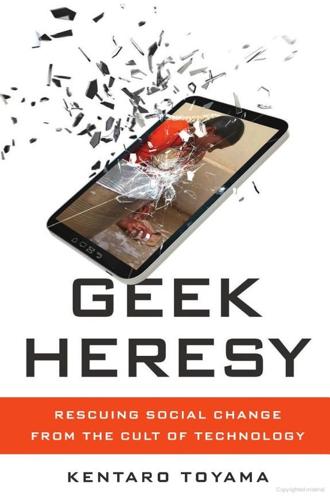
Geek Heresy: Rescuing Social Change From the Cult of Technology
by
Kentaro Toyama
Published 25 May 2015
According to Prahalad, governments and nonprofits have been going about things all wrong, especially when it comes to poverty. They commit two sins hateful to any business: First, they don’t cover their own costs; second, they’re unable to reach large numbers of people. “Charity might feel good,” Prahalad observed, “but it rarely solves the problem in a scalable and sustainable fashion.”21 Prahalad’s proposal was to sell low-cost products and services with the goal of fostering poor people’s “capacity to consume.” These people, he said, were “value-conscious consumers,” and affordable consumption opportunities served them by “offering them choices and encouraging self-esteem.”22 Prahalad’s rhetoric rehashed the themes of mainstream economics: individual choice, market freedom, and poverty alleviation without politics.
…
As a result, meaningful expenditures on education or capacity building are often seen as unsustainable, because they incur high costs and require someone to keep paying for them year after year. (Here again is C. K. Prahalad, who, as you may remember, groaned that “charity might feel good, but it rarely solves the problem in a scalable and sustainable fashion.”)49 This is, however, a counterproductive view of sustainability. Shanti Bhavan, for example, is a decidedly unsustainable endeavor by the standards of Prahalad. It costs the school about $1,500 per year per student, and these funds are not recovered from the students’ families – they certainly couldn’t afford it.

Apocalypse Never: Why Environmental Alarmism Hurts Us All
by
Michael Shellenberger
Published 28 Jun 2020
Some, like Jeff Ballinger, whose work with Indonesian factory workers dates back to 1988, believes Nike hyped “environmental sustainability” as a public-relations tool to overshadow continued human exploitation. “The grinding outsource paradigm still rules in most low-skill manufacturing,” wrote Ballinger12 Meanwhile, environmental experts and activists say consumer product companies haven’t done anything significant to improve their environmental practices. “The mission of sustainable fashion has been an utter failure, and all small and incremental changes have been drowned by an explosive economy of extraction, consumption, waste and continuous labour abuse,” said activists in 2019.13 In June 2015, a few months after visiting Congo, Rwanda, and Uganda, I decided to go to Indonesia and see for myself what the situation was like for factory workers there.
…
Germany, 151–53 learning curve of, 146 nuclear vs., 146, 151–54, 204–5 powering utopia, 185–88 Starbucks Rule, 199 subsidies for, 153, 207 unreliability of, 176–81 in Vermont, 154 waste and costs, 188–92 Solar homes, 186–87 Solaria, 205 Solar Impulse, 188 Solar panels, 146, 154, 176–77, 188–89, 190–91 Solyndra, 218, 361n South Korea GDP, 104 nuclear energy, 145, 169–71 Soviet Union, 114 Chernobyl nuclear disaster, 145, 147, 148–50, 168, 171 Cold War, 158–61, 172–73, 266 whaling, 108, 124 Soy farming, 35, 38–41 Species area model, 66–67, 263 Species extinction, 65–67 Stanford University, 4, 179, 219, 237, 243, 244 Starbucks Rule, 199 Statoil, 181 Steyer, Tom, 202–4, 209, 220–21 Stone, Robert, 171 Stop Funding Climate Death (banner), x Stotish, Ron, 122 Strontium-90, 161–62 Stryker, Pat, 218 Student Strike for the Climate, 283 Styles, Harry, 222 Sugar-based bioplastics, 60–61 Sugarcane ethanol, 193 Sundesert Nuclear Power Plant, 210–11 Sun Run, 205 Suparti, 88–89, 90, 92–93, 94, 96–100, 106, 247, 277 Sustainable development, 226, 227, 229, 238, 249 Sustainable fashion, 88 Sustainable Practices, 13 Sutherland, Kiefer, 17 Suzuki Maruti Alto, 98 Sweatshops, 87–88, 92–93 Sweden, forest cover, 32, 33 Systems analysis, 114 Taubes, Gary, 132–33, 139, 140 Teicholz, Nina, 131–33, 134, 140 Temperature and labor productivity, 34, 304n Tennessee Valley Authority (TVA), 233–34, 240 Tesla, 178, 218, 219 Tesla Powerwall, 176–77, 219 Texas A&M University, 47 Thermostat hypothesis, 262–63 This Morning (TV show), x–xii Thomas, Gerry, 147–50 Thomas, Philip, 169 Thoreau, Henry David, 186 Three Mile Island accident, 145, 146, 150, 165, 209 350.org, 118, 202, 204, 209, 220, 260, 284 Thunberg, Greta, 3, 32, 223–24, 250, 272–73, 283 Brazil lawsuit, 28 celebrity hypocrisy and, 223–24, 247 Davos speech, 270 nuclear energy opposition, 154–55 United Nations speech, 271 vegetarianism of, 127 Tillich, Paul, 261 “Tipping points,” 25–26 Tohoku tsunami of 2011, 145 Tol, Richard, 253–57 TomKat Charitable Trust, 202 Tortoiseshell, 52–53, 54–55, 61–62 Total SA, 82 Trader Joe’s, 122 “Tragedy of the Commons” (Hardin), 236–37 Trans fats, 132 Trieb, Franz, 195–96 Truman, Harry, 186–87 Trump, Donald, 200 Turner, Ted, 218 24 (TV show), 17 Tyndall Center, 11 Uganda, 7, 68, 73–74, 78, 89–90 Uninhabitable Earth, The (Wallace-Wells), 3, 24–25, 284 Union of Concerned Scientists, 162–63 United Nations Chernobyl nuclear disaster, 149 family planning, 241 Food and Agriculture Organization (FAO), xiii, 6, 13, 121, 129–30, 228 Intergovernmental Panel on Climate Change.
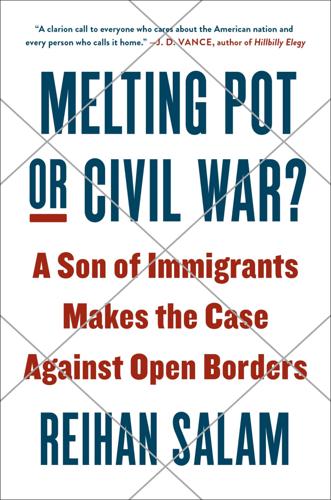
Melting Pot or Civil War?: A Son of Immigrants Makes the Case Against Open Borders
by
Reihan Salam
Published 24 Sep 2018
Take the case of the end of the bracero program in 1965, the subject of a paper by the economists Michael Clemens, Ethan Lewis, and Hannah Postel.18 Between 1942 and 1965, the U.S. and Mexican governments agreed to allow Mexican seasonal workers to take jobs on U.S. farms. Congress voted to end the bracero program in part out of a desire to raise wages for U.S. farmworkers. What they failed to appreciate is that rather than raise wages in a sustained fashion, farmers had an alternative: they could adopt existing mechanical harvest technologies that would greatly reduce their reliance on human labor, and they could devise entirely new production techniques that would do the same. Sure enough, that’s what happened. Labor scarcity didn’t result in farmworkers raising their incomes.
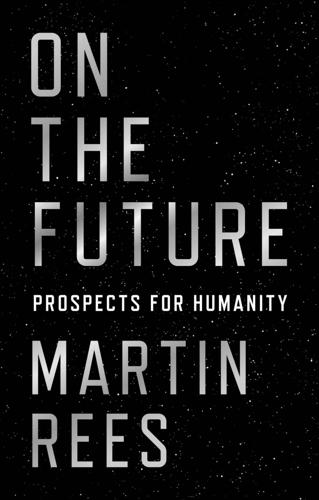
On the Future: Prospects for Humanity
by
Martin J. Rees
Published 14 Oct 2018
But they were very limited—it’s like claiming that there’s no life in the oceans after analysing one glassful of seawater. That’s why we should welcome the launch of Breakthrough Listen, a ten-year commitment by Yuri Milner, a Russian investor, to buy time on the world’s best radio telescopes and develop instruments to scan the sky in a more comprehensive and sustained fashion than before. The searches will cover a wide range of radio and microwave frequencies, using specially developed signal processing equipment. And they will be supplemented by searches for ‘flashes’ of visible light or X-rays that don’t seem to have a natural origin. Moreover, the advent of social media and citizen science will enable a global community of enthusiasts to download data and participate in this cosmic quest.

Investing to Save the Planet: How Your Money Can Make a Difference
by
Alice Ross
Published 19 Nov 2020
You might care strongly about animal welfare but not worry about how frequently you fly. Or you might fly but choose to carbon-offset by planting trees. You may worry that you’re being inconsistent, or that you don’t have time to do all the research to make the best choice. I frequently wish that there were simple guidelines laid down: if I want to make sustainable fashion choices, for example, I don’t want to have to do a huge amount of research. I’d like there to be a one-stop website that listed the brands I should buy. Some research has shown that it’s better to buy a fruit that has travelled all the way from the other side of the world than one grown out of season just down the road, with all the energy-guzzling hothousing that entails – but perhaps only if the fruit came by boat and not on a plane.
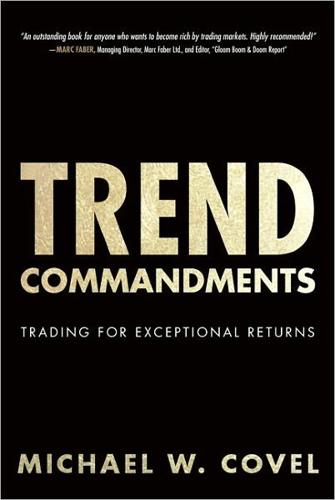
Trend Commandments: Trading for Exceptional Returns
by
Michael W. Covel
Published 14 Jun 2011
Whenever a trend, once established, reverses quickly, there is always a point, not far above or below the extreme reached prior to the reversal, at which evidence of a trend in the opposite direction is given. At that point any position held in the direction of the original trend should be reversed—or at least closed out—at a limited loss. Profits are not limited because whenever a trend, once established, continues in a sustained fashion without giving any evidence of trend reversal, the trend-following principle requires that a market position be maintained as long as the trend continues.”22 Richard Donchian, as most traders are aware, did much more than write about trend following. He was also a broker, analyst, and trader, who most significantly was the founder of the first publicly managed futures fund, the moving average–based Futures, Inc., in 1948.23 Starting in 1960, he began writing a weekly commodity “Trend Timing” letter, based on one of his better-known trend following systems, the 5-20 moving average method, thereby creating a documented decades-long performance record for his trading methodology.

What's Yours Is Mine: Against the Sharing Economy
by
Tom Slee
Published 18 Nov 2015
The Sharing Economy appeals to many people, disenchanted with both the centralized bureaucracy of the state and the pervasive commodification of the market, who are on the lookout for alternative models of organization and collaboration, new models for democratic and collective living. Built around the act of sharing, the concept of the commons offers tantalizing visions of co-operative and non-authoritarian patterns of collaboration. But managing commons in a sustainable fashion has proven difficult, particularly at large scale, which is why many commons have been discarded, replaced legitimately or illegitimately by private resources managed as commodities (agricultural enclosure, carbon permits, tradable fishing quotas), or by public resources managed by a central authority (roads, public hygiene).
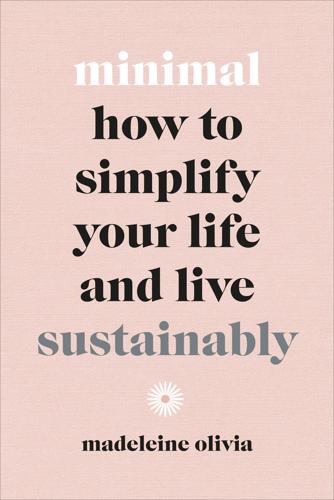
Minimal: How to Simplify Your Life and Live Sustainably
by
Madeleine Olivia
Published 9 Jan 2020
Thankfully, in the past few years sustainability within the fashion industry is a growing trend, making it easier to find brands and creators committed to providing clothing that doesn’t hide any dirty secrets, and more places for us to easily get secondhand fashion. There has been a significant increase in people looking to buy responsibly-sourced fashion, with a 66 per cent increase in searches for sustainable fashion since 2018.21 Where’s a good place to start? Our wardrobes. Decluttering Your Wardrobe The process of decluttering your wardrobe can help you to understand your style, create a wardrobe of key pieces you can wear over and over, and make better decisions about what clothes you buy in the future.
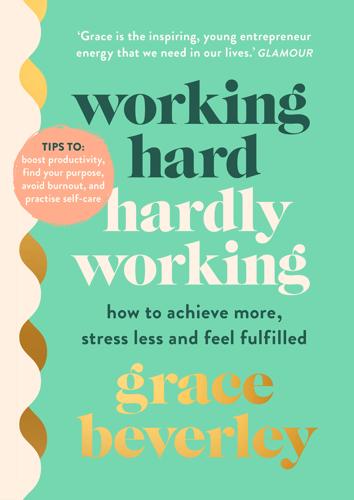
Working Hard, Hardly Working
by
Grace Beverley
Examples: ‘respond to work Whatsapps’, ‘upload announcement to Instagram story’, ‘send message to colleague about office party’. Tasks: Things that will take you up to thirty minutes. These will require some work and headspace, but don’t involve more than two or three mini tasks to get the whole task done. Examples: ‘compose email to product team about sustainable fashion article’, ‘draft response to lawyer’, ‘review app development presentation’. Projects: These are the big boys. They may not be for today, but you still want to be conscious of them as you go through your day and carry them over into your week. Examples: ‘design new collection’, ‘prepare full market research of competitors’, ‘prepare presentation on financials’.
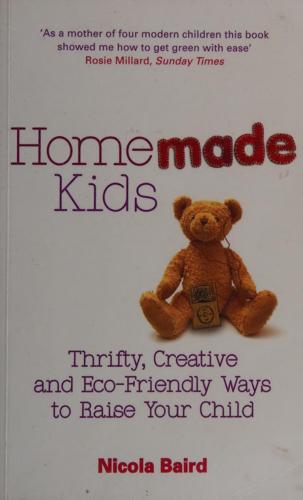
Homemade Kids: Thrifty, Creative and Eco-Friendly Ways to Raise Your Child
by
Nicola Baird
Published 14 Sep 2010
You could One mum who has set out to tackle the failings of fast fashion is the utterly stylish Dilys Williams, who has worked with two renowned eco-designers Katharine Hamnett (big on organic) and Stella McCartney (won't use leather or fur). Dilys heads the : : i : London College of Fashion’s centre for sustainable fashion where she encourages tomorrow’s designers to create new pieces fashioned from well-made, older garments. It's a modern tweak to the trend for vintage chic. ‘Be proud of who you are and think about your identity — and make sure your clothes reflect that LESSEE LOREEN NER identity,’ says Dilys. “| ‘If we all loved our clothes more that would change the impact of the fashion industry dramatically.
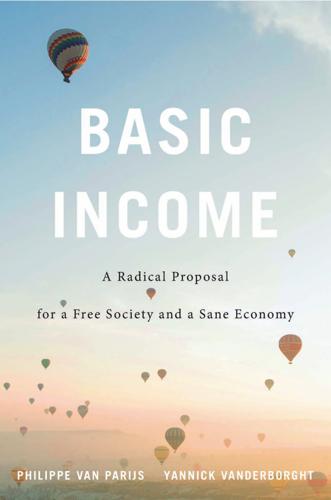
Basic Income: A Radical Proposal for a Free Society and a Sane Economy
by
Philippe van Parijs
and
Yannick Vanderborght
Published 20 Mar 2017
Above all, by facilitating chosen part-Â�time work and promoting a smoother conciliation of work and Â�family life, it enables parents to devote more attention to their Â�children when this is most needed. The underlying, general point is that the efficient working of an economy does not require pushing up the employment rate, maximizing the Â�labor supply in a shortsighted fashion. Making an economy more productive (sensibly interpreted) in a sustainable fashion is not best served by obsessively activating Â�people and locking them in jobs that they hate Â�doing and from which they learn nothing. As the poet Kahlil Gibran put it in 1923, “if you cannot work with love but only with distaste, it is better that you should leave your work.â•‹.â•‹.â•‹.╋╉For if you bake bread with indifference, you bake a Â�bitter bread that feeds but half man’s hunger.”
…
But he can have a view and wants to have one on �whether introducing a basic income would help make a �society more just. The metric of justice he offers is one of basic capabilities, such as access to adequate food, housing, clothing, health, and education. If, �under given circumstances, introducing a basic income would help extend some of �these capabilities in sustainable fashion to a larger part of the population, his conception of justice would support it. But �there may be circumstances in which, given the choice, some other policy, such as guaranteed employment would be preferable to an equally affordable basic income.53 Like Sen, Brian Barry proposes a conception of justice that is clearly liberal-�egalitarian while being pluralistic and to some extent indeterminate.

The Only Game in Town: Central Banks, Instability, and Avoiding the Next Collapse
by
Mohamed A. El-Erian
Published 26 Jan 2016
It was only many months later that my worries were validated by the public recollections of Chairman Bernanke and Treasury secretary Paulson, including Bernanke’s characterization of those “very, very dark hours.”8 Yes, the United States and therefore much of the rest of the world had come very close to declaring a “bank holiday” that would have shut down the financial system in order to subsequently reset it in a sustainable fashion. Moreover, as Secretary Geithner noted in his book on the crisis, members of the economic team “talked openly” about nationalizing major banks. And this was but one of several issues over which they found themselves “at odds,” though the message from his book is that these “disagreements did not turn out to be consequential.”9 With the world suffering significant damage and dangerously standing on the edge of an even greater calamity as a result of financial irresponsibility, it was only a matter of time until the blame game started in earnest.
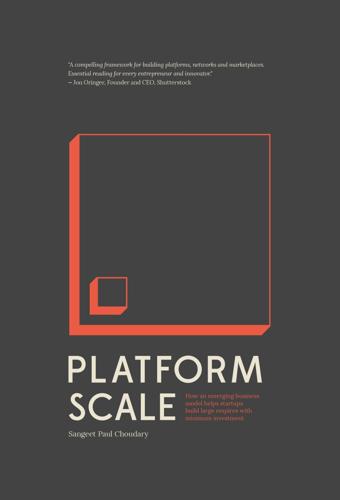
Platform Scale: How an Emerging Business Model Helps Startups Build Large Empires With Minimum Investment
by
Sangeet Paul Choudary
Published 14 Sep 2015
INTERACTION REPEATABILITY AND EFFICIENCY Producers and consumers should be encouraged to participate on the platform in a manner that maximizes the repeatability of the core interaction. The repeatability of the core interaction drives platform scale. To achieve platform scale, a platform must be managed such that the core interaction is repeated in a scalable and sustainable fashion. Repeatable and efficient interactions hold the key to platform scale. Repeatability involves ensuring that: 1.All actions in the interaction are executed smoothly. 2.The feedback loop in an interaction is executed so that it kick-starts the next interaction organically. SIX ELEMENTS OF EXECUTION To execute toward platform scale, the following elements must be in place: 1.Choice of the overall interaction space.
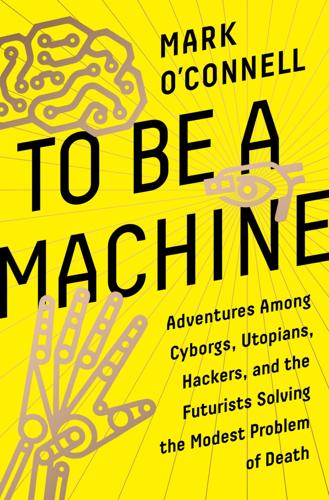
To Be a Machine: Adventures Among Cyborgs, Utopians, Hackers, and the Futurists Solving the Modest Problem of Death
by
Mark O'Connell
Published 28 Feb 2017
This was a man who changed his name, in a youthful gesture of radical self-invention, from Max O’Connor to Max More because, as he once put it in an interview with Wired magazine, “it seemed to really encapsulate the essence of what my goal is: always to improve, never to be static. I was going to get better at everything, become smarter, fitter, and healthier. It would be a constant reminder to keep moving forward.”*1 This was a man who had undertaken, in an explicit and sustained fashion, the Nietzschean task of self-overcoming. And yet here he was, this man, spending his days in a small office in a kind of industrial estate in a suburb of Phoenix, surrounded by the dead. He was a cultivator of hope, it was true, but he was also a processor of bodies, a custodian of corpses: an executive-level necrocrat.

The System: Who Owns the Internet, and How It Owns Us
by
James Ball
Published 19 Aug 2020
The venue he chooses for our chat seems particularly suited to his incongruous role: on the one hand, it’s an immaculately fitted-out private members’ club in London’s Mayfair. On the other hand, it’s not a standard private club: it’s the newly opened Conduit Club, launched, as Vogue described it, as ‘a place where you are not the only one who thinks they can change the world; where you could bump into an ethical investment fund holder at the bar, a sustainable fashion designer in the library, or the head of an influential NGO on the dance floor’.25 We are surrounded, then, by young social entrepreneurs hard at work on their laptops, their memberships sponsored and subsidised by their older and wealthier peers. Oblivious to who is at the next table, one of the would-be entrepreneurs checks Wikipedia as Wales talks.

Cultish: The Language of Fanaticism
by
Amanda Montell
Published 14 Jun 2021
“Being in a top management position, if you’re not careful, you go into an echo chamber,” Kets de Vries explained. “People are going to tell you what you want to hear, so you start to get away with your madness. And that madness becomes institutionalized very quickly.” I interviewed a former employee of a “sustainable fashion” start-up, initially about her involvement with The Class by Taryn Toomey (a “cult fitness” studio we’ll discuss a bit in part 5), and she told me the only reason she got involved with the workout “cult” in the first place was in response to finally quitting her hellish job. For the three years she worked at the fashion company, its physically stunning, psychologically sadistic leader prevented her from sleeping, earning a living wage, or maintaining outside relationships.
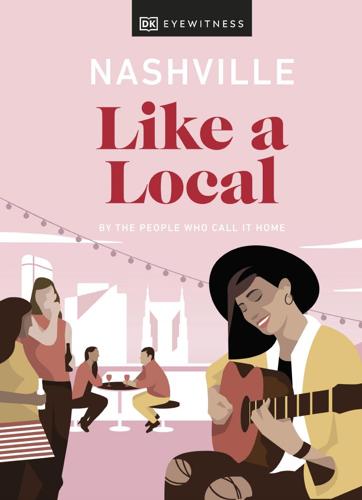
Nashville Like a Local: By the People Who Call It Home
by
Dk Eyewitness
Published 28 Sep 2021
Browse ABLE’s simple, stylish ///cape.waddle.broke; www.vinnielouise.com pieces that’ll look just as good on a blogger as a boardroom boss. Style should be affordable, something that Vinnie Louise owner Ginny » Don’t leave without checking ABLE’s events calendar for workshops, feels strongly about. Named for Ginny’s stylish grandmother, the panel discussions about sustainable fashion, and warehouse sales. airy store is decked out with gingham dresses, denim rompers, and floral kimonos – all with wallet-friendly price tags. Not sure where to begin? The staff are some of the loveliest and on hand to help. BILLY REID Map 4; 1200 Villa Place Unit 403, Wedgewood-Houston; ///rails.enjoy.trader; www.billyreid.com DRAPER JAMES Just south of Nashville is Muscle Shoals Sound Studio where Aretha Map 4; 2608 12th Avenue South, 12 South; ///loans.wire.civil; Franklin and Wilson Pickett recorded tracks, and it’s these soulful roots www.draperjames.com that inspire designer Billy Reid.
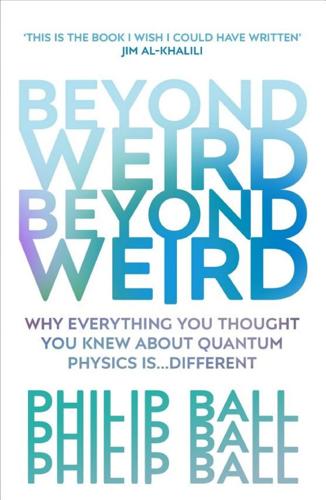
Beyond Weird
by
Philip Ball
Published 22 Mar 2018
That’s completely consistent with our experience. Sure, you can gaze for as long as you like at a coffee mug without altering it in any substantial way. But you can’t do that to an Old Master painting, for the pigments will fade under too much light: you will alter their state. Much less can you examine in prolonged and sustained fashion something small enough that hardly any replicas exist: a single quantum spin, for example. Take a peek and you’ve used up all the information that was available about it. Subsequent measurements may then have a different outcome. What quantum Darwinism tell us is that, fundamentally, the apparent influence of the observer in quantum mechanics is not really about whether probing physically disturbs what is probed (although that can happen).

Badvertising
by
Andrew Simms
Put a little differently, Kasser suggests that ‘in order to successfully pursue one’s materialistic values and goals, one by necessity has to consume, consume a lot, and consume products, services, and experiences that convey status and an appealing image; such actions are usually difficult to reconcile with living in an ecologically-sustainable fashion’. Two other studies have looked explicitly at the issue of whether advertising has an indirect relationship with ecological degradation by statistically testing what are known as ‘mediational’ metrics. In samples of both American and Peruvian adults, results suggested that commercial television viewing is associated with less concern for ecological degradation, and that this association occurs, at least in part, because television viewing leads to high levels of materialism, which, in turn, lead people to care less about the planet.

Cape Town After Apartheid: Crime and Governance in the Divided City
by
Tony Roshan Samara
Published 12 Jun 2011
It begins with a discussion of the impact that hard policing has had on the people the police are meant to protect, on crime rates, and on the ability of communities to trust police. Next, the chapter addresses the issue of social crime prevention, an approach to crime reduction in line with the progressive transformation of the criminal justice system. As the chapter shows, social crime prevention measures are not being implemented in any sustained fashion, and narrow definitions of security continue to exert influence over policing strategies. The chapter concludes with an in-depth discussion of community/police relations, placing emphasis on the barriers, from the point of view of many communities, to productive partnerships. Finally, chapter 5 begins with a discussion of the continued underdevelopment of the Cape Flats, and the increased tendency of the state to view unrest generated by poverty and inequality as a security threat.
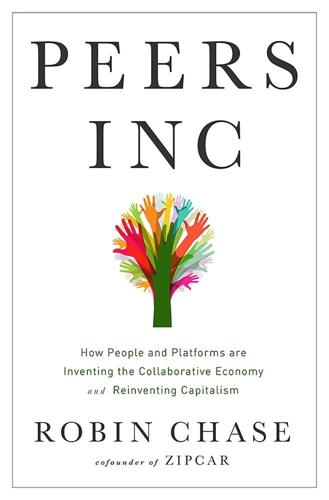
Peers Inc: How People and Platforms Are Inventing the Collaborative Economy and Reinventing Capitalism
by
Robin Chase
Published 14 May 2015
Just as we need to ensure that we do not repeat the mistakes which led to the recent banking crisis, so there is an equal imperative to face up to the realities of a world where 9.5 billion people will put enormous strain on biophysical resources. The challenge for business is to meet these needs in a sustainable fashion. Success will require completely new business models. It will demand transformational innovation in product and process technologies to minimize resource use, as well as the development of “closed-loop” systems so that one man’s waste becomes another’s raw material. Interestingly too, the challenge is likely to encourage a much more collaborative form of capitalism.
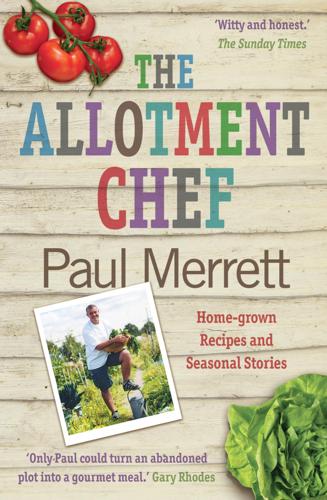
The Allotment Chef: Home-Grown Recipes and Seasonal Stories
by
Paul Merrett
Published 3 Sep 2014
Oh, and we should ban all processed fish – including fish fingers. Sorry Ellie and Rich, but there you go! Get to know a real live local fishmonger who is sympathetic to your fish-stock-preserving ways and ask his advice on what is seasonally plentiful and what has been caught in the most sustainable fashion. By doing this you can serve up your home-grown cabbage with brill wrapped in bacon without feeling as though you have to pray for forgiveness. vegetable dishes Broad Beans with Fried Potatoes, Garlic and Pancetta serves 4 Every plot holder grows broad beans. In our first year, we planted them all at once and suffered a glut.
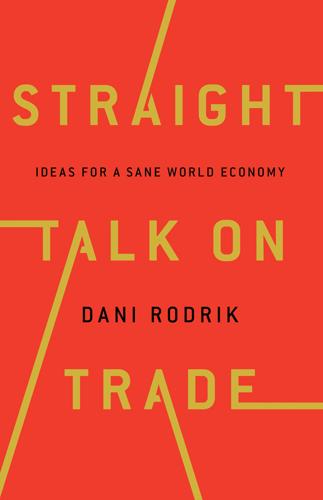
Straight Talk on Trade: Ideas for a Sane World Economy
by
Dani Rodrik
Published 8 Oct 2017
Of course, just as it was inappropriate to extrapolate from a decade of strong growth, one should not read too much into short-term fluctuations. Nevertheless, there are strong reasons to believe that rapid growth will prove the exception rather than the rule in the decades ahead. To see why, we need to understand how “growth miracles” are made. These are countries that grew rapidly in a sustained fashion beyond the bursts of growth I examined in the previous chapter. Except for a handful of small countries that benefited from natural-resource bonanzas, all of these successful economies owe their growth to rapid industrialization. If there is one thing that everyone agrees on about the East Asian recipe, it is that Japan, South Korea, Singapore, Taiwan, and of course China all were exceptionally good at moving their labor from the countryside (or informal activities) to organized manufacturing.
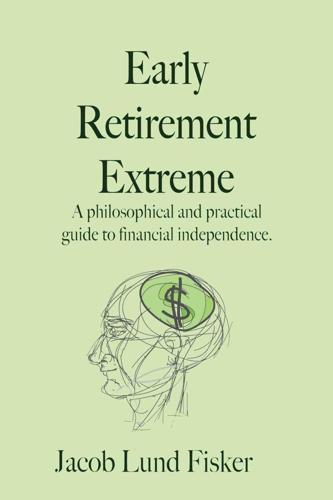
Early Retirement Extreme
by
Jacob Lund Fisker
Published 30 Sep 2010
With our level of technology and understanding, we can gather resources from our environment more effectively and only work a few hours a week, or part of the year, or develop enough assets to no longer work at all, letting others do the work.104 Personal economics Personal economics is the study of the principles of how individuals can most efficiently acquire resources, create and derive utility, and decompose or dispose of the resulting waste in a way that turns it back into resources. Ideally, society would be set up in a sustainable fashion, so that the material cycle runs in a stable, nongrowing fashion with no losses. In such a system, waste wouldn't be a problem, since it would serve as resources for the next cycle. For example, leftover food would be composted and turned into fertilizer for the next harvest rather than ending up in landfills.

The Globalization Paradox: Democracy and the Future of the World Economy
by
Dani Rodrik
Published 23 Dec 2010
India would eventually open up its economy; but unlike Latin America it did so cautiously, gradually, and more than a decade after the pickup in growth. A constraint will cede its place to others once it is successfully lifted. A selective approach therefore requires being ready to address the next set of constraints. It requires flexible policies and willingness to change course as circumstances demand. Countries that have grown in a sustained fashion are those where this strategy has been applied consistently over the longer run. China once again provides the leading example. Chinese policy reformers employed a strategic and sequential approach that targeted one set of supply-side constraints after another. They started out in agriculture in the late seventies, moved to industry in the eighties, then to foreign trade in the nineties, and are now struggling with the finance sector.
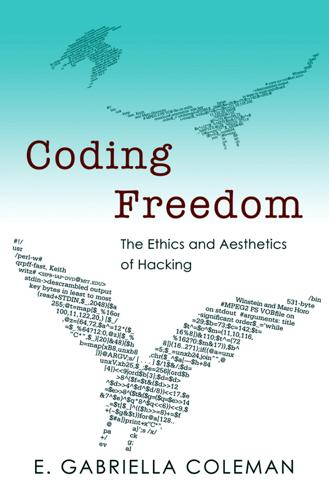
Coding Freedom: The Ethics and Aesthetics of Hacking
by
E. Gabriella Coleman
Published 25 Nov 2012
Everyone, not a select order of people, must be able to exercise their capacity for thought, discrimination, and critical intervention, and at all times. The anxiety that power could potentially corrupt those who enjoy privileges and block conditions for public self-development (by making choices) as well as institute a rigid form of vertical authority emerges from time to time, although in a less coherent and sustained fashion than the critiques of Debian’s democratic elements. It is far more common to joke about the existence of what is called the cabal, usually stated as a denial: “There is no cabal.” Long before Debian existed, this was a running joke on Usenet, where a similar discomfort over the potential for corruption by meritocratic leaders played out (Pfaffenberger 1996).12 In Debian joking enjoys a wide purview, and playful joking about the cabal is littered everywhere.

Limitarianism: The Case Against Extreme Wealth
by
Ingrid Robeyns
Published 16 Jan 2024
There is a profound moral decision to be made here, based on the following questions: does the economy, in this case represented by a multinational company like Amazon, exist to serve the people, or are the people there to serve the winners of the economy? Do we consider decent working conditions to be optional, or a prerequisite for meeting a minimal moral threshold? Similar questions can be asked in relation to our care for our planet. The clothing chain Zara could move from producing “fast” to sustainable fashion, thereby reducing its significant negative impact on the environment (both in terms of emissions and waste). But this might cut into the net returns of the shareholders, most importantly of its founder Amancio Ortega (currently twenty-third on the Forbes billionaires list, with an estimated total wealth of more than $60 billion).
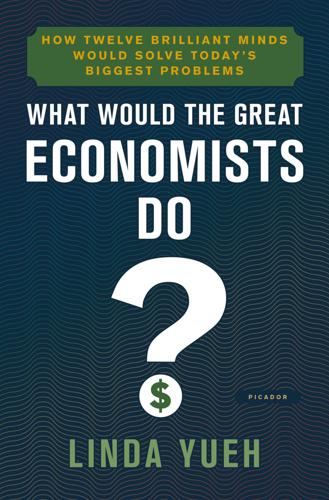
What Would the Great Economists Do?: How Twelve Brilliant Minds Would Solve Today's Biggest Problems
by
Linda Yueh
Published 4 Jun 2018
As I explored in that Radio 4 programme, the British government is trying to rebalance the economy towards making things once again, after the 2008 crisis revealed the downsides of relying too much on financial services. So far they haven’t succeeded. A decade later, the services sector has recovered to pre-recession levels, while manufacturing has not. And it’s not just Britain. America, China and other major economies are also seeking to rebalance their economies so that they can grow in a more sustainable fashion. What would Adam Smith say about these attempts? How would he reconcile his affinity for manufacturing with an aversion to governments intervening in the workings of the ‘invisible hand’? An economist inspired by Adam Smith later became the father of international trade. In 1817 David Ricardo formalized the theory of comparative advantage that shows how every country benefits from free trade.
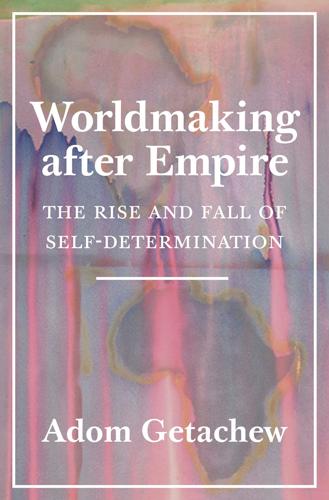
Worldmaking After Empire: The Rise and Fall of Self-Determination
by
Adom Getachew
Published 5 Feb 2019
Against the backdrop of self-determination’s fall, political theorists and philosophers reframed their questions about justice and legitimacy from a global perspective. Historically, these disciplines viewed the domestic sphere and particularly the “sovereign state as the consummation of political experience and activity” and thus limited normative theorizing to questions of domestic politics.68 However, beginning in the 1970s and in a more sustained fashion after the end of the Cold War, the global turn in political theory questioned this disaggregation of the domestic and international and subjected the international to normative theorizing. Fueling this body of work was a confrontation with the nation- state’s empirical and normative limits.
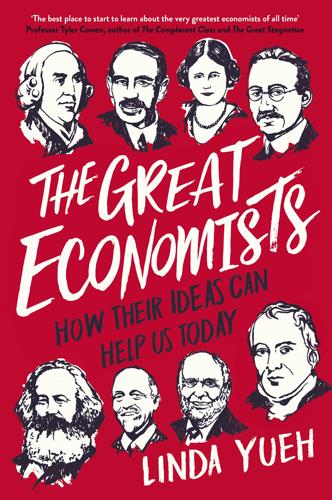
The Great Economists: How Their Ideas Can Help Us Today
by
Linda Yueh
Published 15 Mar 2018
As I explored in that Radio 4 programme, the British government is trying to rebalance the economy towards making things once again, after the 2008 crisis revealed the downsides of relying too much on financial services. So far they haven’t succeeded. A decade later, the services sector has recovered to pre-recession levels, while manufacturing has not. And it’s not just Britain. America, China and other major economies are also seeking to rebalance their economies so that they can grow in a more sustainable fashion. What would Adam Smith say about these attempts? How would he reconcile his affinity for manufacturing with an aversion to governments intervening in the workings of the ‘invisible hand’? An economist inspired by Adam Smith later became the father of international trade. In 1817 David Ricardo formalized the theory of comparative advantage that shows how every country benefits from free trade.

New Laws of Robotics: Defending Human Expertise in the Age of AI
by
Frank Pasquale
Published 14 May 2020
Paul Prinsloo, “Data Frontiers and Frontiers of Power in (Higher) Education: A View of/from the Global South,” Teaching in Higher Education: Critical Perspectives 25, no. 4 (2019): 366–383. 71. Andrew Brooks, “The Hidden Trade in Our Second-Hand Clothes Given to Charity,” Guardian, February 13, 2015, https://www.theguardian.com/sustainable-business/sustainable-fashion-blog/2015/feb/13/second-hand-clothes-charity-donations-africa. 72. Shoshana Zuboff, “The Secrets of Surveillance Capitalism,” Frankfurter Allegemeine Zeitung, March 5, 2016, http://www.faz.net/aktuell/feuilleton/debatten/the-digital-debate/shoshana-zuboff-secrets-of-surveillance-capitalism-14103616-p2.html. 73.
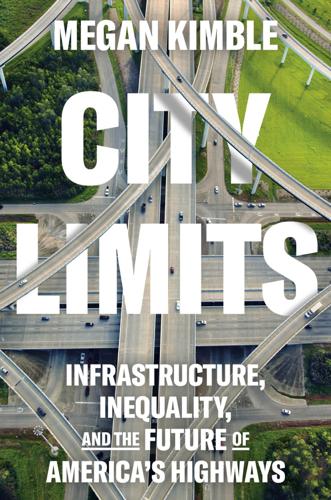
City Limits: Infrastructure, Inequality, and the Future of America's Highways
by
Megan Kimble
Published 2 Apr 2024
Mostly, this crisis was created by the city’s outdated and exclusionary zoning code, which hadn’t been updated since 1984, when the city was less than half its current population. In 2012, the city had adopted a comprehensive plan called Imagine Austin that committed to building a “compact and connected city” that could “accommodate more people in a considered and sustainable fashion.” The following year, the Austin City Council hired a California-based urban planning firm to update the city’s zoning code, a process they dubbed CodeNEXT. By the time I moved to Austin in 2017, signs opposing the effort had sprouted from lawns across the city, reading codenext wrecks austin in bright red type next to a cartoon wrecking ball.
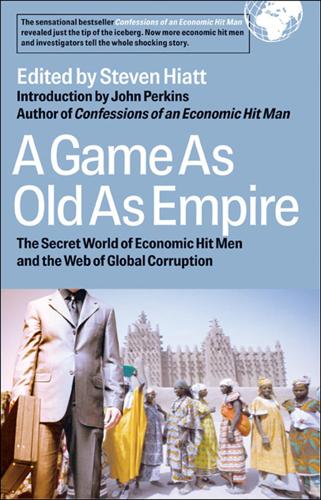
A Game as Old as Empire: The Secret World of Economic Hit Men and the Web of Global Corruption
by
Steven Hiatt; John Perkins
Published 1 Jan 2006
It is nevertheless a sign of hope that for several years NGOs in major OECD countries, and in developing nations such as Indonesia and Brazil, have been building an international ECA reform campaign, a campaign whose relevance and importance can only grow. Notes 1. Global Development Finance 2002: Analysis and Summary Tables (Washington, D.C.: World Bank, 2003), p. 108. 2. True, there remains a great discrepancy between the rhetoric of many development agencies, including their stated purpose of helping the poor in an environmentally sustainable fashion, and their practice—a gap often highlighted in nongovernmental groups’ criticisms of the World Bank. But, as the eighteenth-century French moralist la Rochefoucauld noted, hypocrisy is the tribute that vice pays to virtue. Indeed, it is often the first step in institutional reform, and bilateral and multilateral aid institutions now at least have policies to which they can be held accountable. 3.
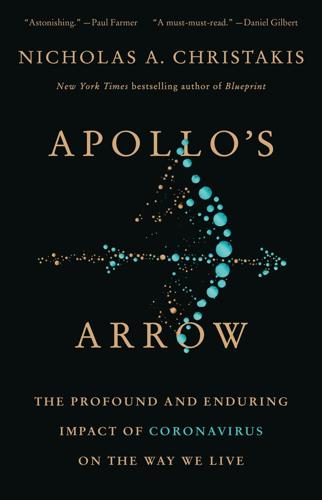
Apollo's Arrow: The Profound and Enduring Impact of Coronavirus on the Way We Live
by
Nicholas A. Christakis
Published 27 Oct 2020
During an astonishing news conference on April 23, 2020, he speculated that bleach administered topically or even internally or via injection could help and that blasting people with ultraviolet light might cure the disease.83 The manufacturers of Clorox and Lysol had to issue statements pleading with Americans not to inject or ingest their products, since that could kill them. There was a certain irony in this turn of events, given Lysol’s old history of promoting itself as a “feminine” disinfectant (it was used, ineffectively, as a contraceptive).84 Even worse, Trump used his bully pulpit in a more sustained fashion to repeat claims that hydroxychloroquine, an antimalarial agent, could cure or prevent COVID-19. While a series of uncontrolled studies had raised the possibility that this drug might help, many physicians, myself included, were deeply alarmed by this recommendation, not only because the drug can have cardiac toxicity, but also because there was no good evidence for its utility.
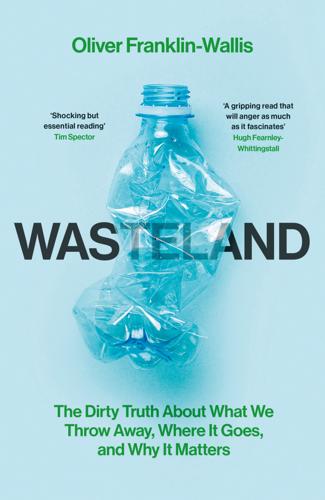
Wasteland: The Dirty Truth About What We Throw Away, Where It Goes, and Why It Matters
by
Oliver Franklin-Wallis
Published 21 Jun 2023
Yuan, ‘A Review on Textile Recycling Practices and Challenges’, Textiles, 2022, 2, 174–188: DOI: 10.3390/textiles2010010 24 Jo Lorenz, ‘Decolonising Fashion: How An Influx Of “Dead White Man’s Clothes” Is Affecting Ghana’, Eco Age, 04/08/2020: https://eco-age.com/resources/decolonising-fashion-dead-white-mans-clothes-ghana/ 25 Heather Snowden, ‘This is what actually happens to your donated clothes’, High Snobiety, 2021: https://www.highsnobiety.com/p/kantamanto-market-the-or-circular-economy-fashion/ 26 Sally Baden and Catherine Barber, ‘The impact of the second-hand clothing trade on developing countries’, Oxfam, 2005: https://oxfamilibrary.openrepository.com/bitstream/handle/10546/112464/rr-impact-second-hand-clothing-trade-developing-countries-010905-en.pdf 27 More commonly they are called Mitumba, referring to the bales they arrive in. Andrew Brooks, ‘The hidden trade in our second-hand clothes given to charity’, The Guardian, 13/02/2015: https://www.theguardian.com/sustainable-business/sustainable-fashion-blog/2015/feb/13/second-hand-clothes-charity-donations-africa 28 For a more complete history of this trade, see Andrew Brooks’s Clothing Poverty (London: Bloomsbury), 2015. 29 Tragedy breeds conspiracy, but there’s no denying that the market is built on prime real estate. ‘Kantamanto fire outbreak: We’re not surprised our market was set ablaze – traders claim’, GhanaWeb, 16/12/2020: https://www.ghanaweb.com/GhanaHomePage/NewsArchive/Kantamanto-fire-outbreak-We-re-not-surprised-our-market-was-set-ablaze-Traders-claim-1135100 30 Madeleine Cobbing, Sodfa Daaji et al., ‘Poisoned Gifts’, Greenpeace (2022): https://www.greenpeace.org/static/planet4-international-stateless/2022/04/9f50d3de-greenpeace-germany-poisoned-fast-fashion-briefing-factsheet-april-2022.pdf 31 Ellen MacArthur Foundation, A New Textiles Economy. 32 Lucianne Tonti, ‘How green are your leggings?

Frostbite: How Refrigeration Changed Our Food, Our Planet, and Ourselves
by
Nicola Twilley
Published 24 Jun 2024
(Rwanda’s medical system employs a similar tactic, relying on drones to deliver blood to rural hospitals that would take too long to reach by road.) But as Iranshubije’s business expands, he expects to invest in cold storage; for him, as for thousands of others, refrigeration is a prerequisite for growth. The challenge for ACES is to ensure that the urgent need for cold chains in countries like Rwanda is met in a sustainable fashion. Cold chains present a double bind; both their absence and their presence have huge ecological costs. The UN Food and Agriculture Organization estimates that if global food waste were a country, its greenhouse gas emissions would be the third largest in the world, right behind China and the US.

Power Hungry: The Myths of "Green" Energy and the Real Fuels of the Future
by
Robert Bryce
Published 26 Apr 2011
According to estimates from the United Nations Environmental Program, total U.S. wood consumption is now about 236.4 million tons per year.9 Given those numbers, if the United States wants to continue using wood for building homes, bookshelves, and other uses—while also replacing 10 percent of its coal-fired generation capacity with wood-fired generators— it will need to consume nearly 573 million tons of wood per year, or about 2.5 times its current consumption. These numbers apparently don’t bother Romm and other cheerleaders of this concept. In lauding the Georgia Power plant’s move to burn wood rather than coal, he wrote that “the key, of course, [is] to make sure this is all done in the sustainable fashion. That will be the job of regulators and the Obama administration.”10 But regulators, try as they might, can’t overcome basic physics. The problems with biomass-to-electricity schemes are the same ones that haunt nearly every renewable energy idea: power density and energy density. Wood is a wonderful fuel for roasting marshmallows and keeping warm on a cold night.

If You're So Smart, Why Aren't You Happy?
by
Raj Raghunathan
Published 25 Apr 2016
So in other words, if a critical mass of us were to adopt the recipe outlined in this book, societies would likely evolve in a different, and arguably better, direction. We may produce fewer widgets, so to speak. For example, fast food chains may sprout a little less frequently, and the next iPad may take more time to arrive. But the widgets that we do produce will be more meaningful, and will be produced in a more sustainable fashion. As a result, our economic activity would serve not just a few stakeholders—such as the manufacturers, the retailers, and the customers—but also those who are external to the market: the animals, the indigent, and future generations. A Win-Win-Win-Win Solution To summarize, it appears that the recipe for a happy and fulfilling life is, in fact, not just a “win-win-win” solution, but a “win-win-win-win” solution.

The Story of Stuff: The Impact of Overconsumption on the Planet, Our Communities, and Our Health-And How We Can Make It Better
by
Annie Leonard
Published 22 Feb 2011
Ray Anderson, “The business logic of sustainability,” TED talk filmed February 2009, posted May 2009 (ted.com/talks/ray_anderson_on_the_business_ logic_of_sustain ability.html). 16. Ibid. 17. Ibid. 18. Charles Fishman, “Sustainable Growth—Interface, Inc.” Fast Company, December 18, 2007 (fastcompany.com/magazine/14/sustaing.html). 19. Kate Fletcher, Sustainable Fashion and Textiles (London: Earthscan, 2008), p. 158. 20. Personal correspondence with Ray Anderson, August 2009. 21. Personal communication with Dan Knapp, August 2009. 22. Municipal Solid Waste in the United States 2007 Facts and Figures, U.S. Environmental Protection Agency, November 2008, p. 3 (epa.gov/waste/nonhaz/municipal/pubs/msw07-rpt.pdf). 23.
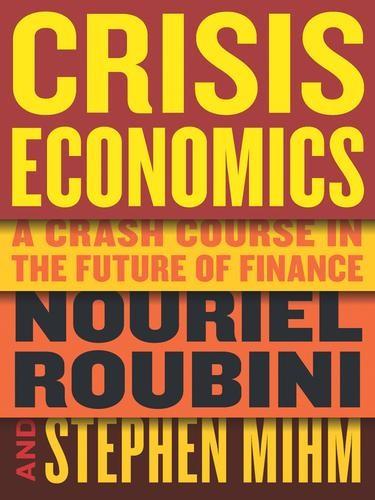
Crisis Economics: A Crash Course in the Future of Finance
by
Nouriel Roubini
and
Stephen Mihm
Published 10 May 2010
In Indonesia the events of 1998 put an end to thirty years of rule by Suharto. And in Argentina, bank runs and street riots in 2001 ultimately toppled the presidency of Fernando de la Rúa, ushering in a period of political and economic chaos. These events do not seem to have registered in any significant or sustained fashion on the consciousness of most investors and policy makers in the United States. The Great Moderation was alive and well. Some skeptics reasonably wondered whether the calm that reigned in most of the advanced industrial nations was an illusion: after all, the mania for Internet stocks and high-tech companies that dominated the American economy in the late 1990s looked like a consummate bubble, with a financial crisis waiting in the wings.
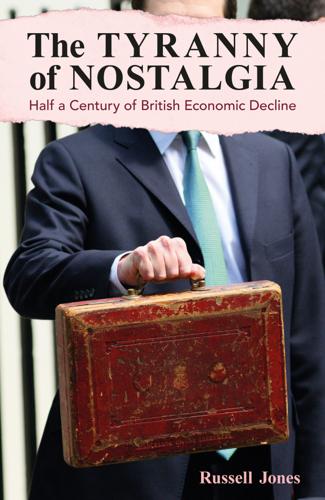
The Tyranny of Nostalgia: Half a Century of British Economic Decline
by
Russell Jones
Published 15 Jan 2023
structural integrity In the meantime, reflecting in part RBC theory, but also the observed tendencies for economic growth to generally slow, and for certain economies to be more inflexible than others, there was a growing focus on ‘real’, or ‘supply-side’, shocks to economic activity. This led to exploration of how microeconomic policies should be designed to reduce the impact of these shocks, and to generally improve the working of markets and, thereby, the ability of economies to expand in a sustained fashion. These structural reforms were increasingly elevated to the forefront of policy, not just in the UK but around the world. Nowhere is this more obvious than in the quid pro quos attached to the assistance provided to financially compromised countries by the IMF and the World Bank. Loans were conditional on commitments to pursue financial deregulation, privatization, labour and product market liberalization, and the curbing of the influence of the state through tighter public spending control and tax reform.

The fortune at the bottom of the pyramid
by
C. K. Prahalad
Published 15 Jan 2005
Cash-poor and with a low level of income, the BOP consumer has to be accessed differently. The traditional approach to creating the capacity to consume among the poor has been to provide the product or service free of charge. This has the feel of philanthropy. As mentioned previously, charity might feel good, but it rarely solves the problem in a scalable and sustainable fashion. A rapidly evolving approach to encouraging consumption and choice at the BOP is to make unit packages that are small and, therefore, affordable. The logic is obvious. The rich use cash to inventory convenience. They can afford, for example, to buy a large bottle of shampoo to avoid multiple trips to the store.

The Best Business Writing 2013
by
Dean Starkman
Published 1 Jan 2013
Given TED’s disproportionate influence on a certain level of the global debate, it follows that the public at large also becomes more approving of technological solutions to problems that are not technological but political. Problems of climate change become problems of making production more efficient or finding ways to colonize other planets—not of reaching political agreement on how to limit production or consume in a more sustainable fashion. Problems of health care become problems of inadequate self-monitoring and data-sharing. Problems of ensuring one’s privacy—which might otherwise get solved by pushing for new laws—become problems of inadequate tools for defending one’s anonymity online or selling access to one’s own data. (The Khannas are not alone in believing that “individuals [must] gain control over the value of their time, skills, data, and resources.
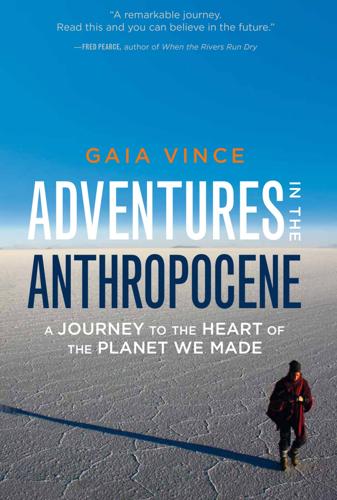
Adventures in the Anthropocene: A Journey to the Heart of the Planet We Made
by
Gaia Vince
Published 19 Oct 2014
There is now a deeply rooted cultural belief that shopping is necessary and a patriotic undertaking for national economic prosperity, and that buying more things makes a person more desirable and improves their status. Entire industries exist to perpetuate this philosophy, even though most people know, deep down, that the majority of the stuff they buy is unnecessary and wasteful of money and resources. Purveyors of green lifestyles and sustainable fashion products have had some little success at convincing small sectors of society to buy products that are less environmentally damaging. Some consumer-targeted campaigns that have focused on ethical issues have been very successful at persuading people not to buy fur or to buy fish caught in a way that doesn’t harm dolphins.
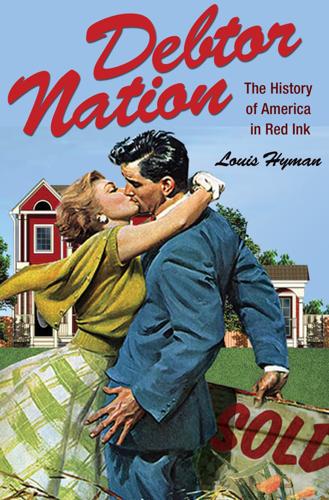
Debtor Nation: The History of America in Red Ink (Politics and Society in Modern America)
by
Louis Hyman
Published 3 Jan 2011
If instead of directing investment to nonproductive assets, securitization could help us invest in new industries, like green technology, which like aerospace in the 1940s now seems to offer new opportunities to soak up tremendous amounts of capital, produce profits for business, and jobs for workers.7 The financial system coordinates the flow of capital, and as long as it coordinates it in a way that is both profitable and productive, the virtuous circle of capitalism continues. The diversion of capital into nonproductive investments is necessary for consumer capitalism to function, but it cannot be the central motor of the economy in a long-term, sustainable fashion. Housing markets must be liquid. Consumers ought to be able borrow against their incomes to buy that washing machine today. But the financial system loses its purpose when it attains mastery over the real, productive economy. Finance must help us work, not work us over. EPILOGUE 287 Scandal and deceit were only superficially the cause of the financial crisis of the early twenty-first century.
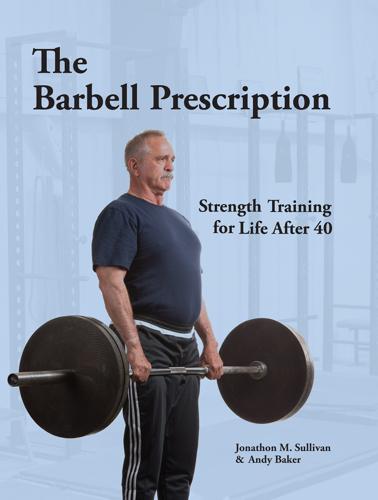
The Barbell Prescription: Strength Training for Life After 40
by
Jonathon Sullivan
and
Andy Baker
Published 2 Dec 2016
Bulking-Up: The ghastly prospect of an innocent but misguided female acquiring a grotesque, hypertrophic, absurdly masculine physique by engaging in a rational barbell training program for health and fitness. This phenomenon never actualizes in practice, but it does provide a convenient excuse for not training. Capacity: In our discussion of bioenergetics, we use the term capacity to refer to the ability of a particular energy system to deliver power in a sustained fashion. Mitochondrial (low-power, “aerobic”) energy systems have high capacity, while cytosolic (high-power, “anaerobic”) energy systems have low capacity. Carbohydrate: An organic molecule consisting of carbon, hydrogen, and oxygen; one of the principle macronutrients. Sugars, starches, and alcohols are examples of carbohydrates.

Never Bet Against Occam: Mast Cell Activation Disease and the Modern Epidemics of Chronic Illness and Medical Complexity
by
Lawrence B. Afrin M. D.
,
Kendra Neilsen Myles
and
Kristi Posival
Published 15 Jan 2016
Then, at age 14, Bob suffered sudden onset of migraine headache, which had waxed and waned over time but to date had essentially never completely resolved. He said the headache had very consistently been blamed on chronic sinusitis but that no sinusitis treatment of any sort – and he certainly has tried an awful lot of them – had ever helped significantly or in a sustained fashion. For example, sometimes when his sinusitis and headache would flare, initiation of antibiotics would help a good bit, but only for 1-2 days, and then symptoms would resurge and sustain even while he continued and finished the course of the antibiotic. By age 17 Bob was sleeping through many of his classes because the light in the classrooms sometimes triggered flares of his headache.
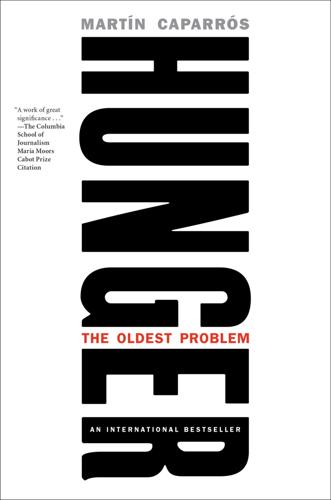
Hunger: The Oldest Problem
by
Martin Caparros
Published 14 Jan 2020
So they have to be offered opportunities to be productive in the countryside, and they have to know how to make use of them. What’s needed is not a system of mass production but rather production by the masses,” as Gandhi said, which would allow them to produce food for themselves and society in a sustainable fashion, so they won’t be constantly pushed toward the urban centers, which are already totally overpopulated. In our current system, they say that peasants are no good at growing food and that’s why they earn less than two thousand rupees a month, and they should go to the cities to work in something else and let the corporations produce food.
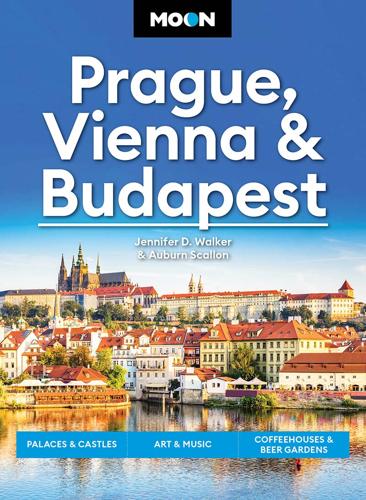
Moon Prague, Vienna & Budapest: Palaces & Castles, Art & Music, Coffeehouses & Beer Gardens
by
Jennifer D Walker
,
Auburn Scallon
and
Moon Travel Guides
Published 15 Oct 2024
Ebenberg Neubaugasse 4; tel. 06/99-1528-7226; Mon.-Fri. 11am-7pm, Sat. 11am-5pm; U3: Neubaugasse This tiny ethical fashion concept store on Neubaugasse is the passion project of designer Laura Ebenberg, who is dedicated to sustainable and ethical fashion. She handpicks items from the European sustainable fashion scene, like Austrian organic brand anzüglich and Berlin-based fair trade fashion company SlowMo—but Ebenberg also presents her own creations in this intimate boutique. Here, you can pick up shoes made from organic materials and bags made from recycled sails. L’Adresse Zollergasse 4; tel. 06/76-653-7911; www.ladresseconceptstore.com [URL inactive]; Mon.
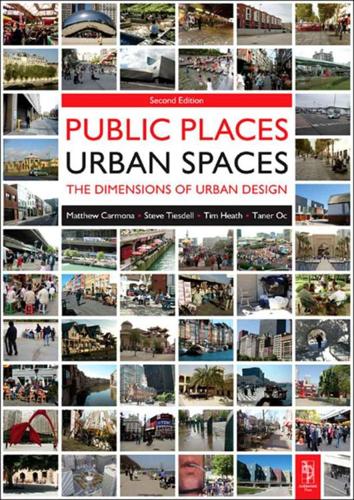
Public Places, Urban Spaces: The Dimensions of Urban Design
by
Matthew Carmona
,
Tim Heath
,
Steve Tiesdell
and
Taner Oc
Published 15 Feb 2010
City/Region-Wide Scale Appraisal Appraisal at this scale ranges from evaluating the broad character of the underlying natural landscape through identifying distinctive areas of towns and cities (e.g. neighbourhoods or quarters) to understanding the capital web and movement patterns. These provide means to understand urban growth patterns and to relate new development to existing urban areas in a sustainable fashion (Figure 11.3). FIGURE 11.3 (a–c) Glasgow city centre: (a) movement patterns, (b) open space structure and (c) distinctive neighbourhoods (Image: Gillespies 1995). As the basis for a design-based regeneration strategy, Glasgow city centre’s spatial character was mapped in a variety of ways Large-scale spatial analysis happens most frequently and with greatest sophistication with regard to natural (rural) landscapes.

The Rough Guide to Peru
by
Rough Guides
Published 27 Apr 2024
In the Madre de Dios region, rising gold prices have led to increasingly violent land grabs from illegal miners and criminal gangs.. By the turn of the century, a massive desert had appeared around Huaypetue, previously a small-time frontier mining town. The neighbouring communities of Amarakaeri (which have been panning for gold in a small-scale, sustainable fashion for more than thirty years) are in danger of losing their land and natural resources. Attempts by NGOs and pro-indigenous lawyers to maintain the boundaries of reserves and communities are constantly thwarted by colonists, who are supported by local government. In 2022, indigenous groups blocked a river in the northeast region of Loreto to protest a crude oil spill of 2,500 barrels.

Dirty Wars: The World Is a Battlefield
by
Jeremy Scahill
Published 22 Apr 2013
Those comments were echoed two days later by the president himself. “We’ve known throughout this year that al-Qaeda in Yemen has become a more serious problem,” Obama said on January 10. “And as a consequence, we have partnered with the Yemeni government to go after those terrorist training camps and cells there in a much more deliberate and sustained fashion.” Obama said bluntly: “I have no intention of sending U.S. boots on the ground” in Yemen. It was an incredible statement from a commander in chief who, for a full year, had troops on the ground who were entrenched, operational and growing in ranks. While the US footprint was small, JSOC was on the ground with the president’s direct authorization.